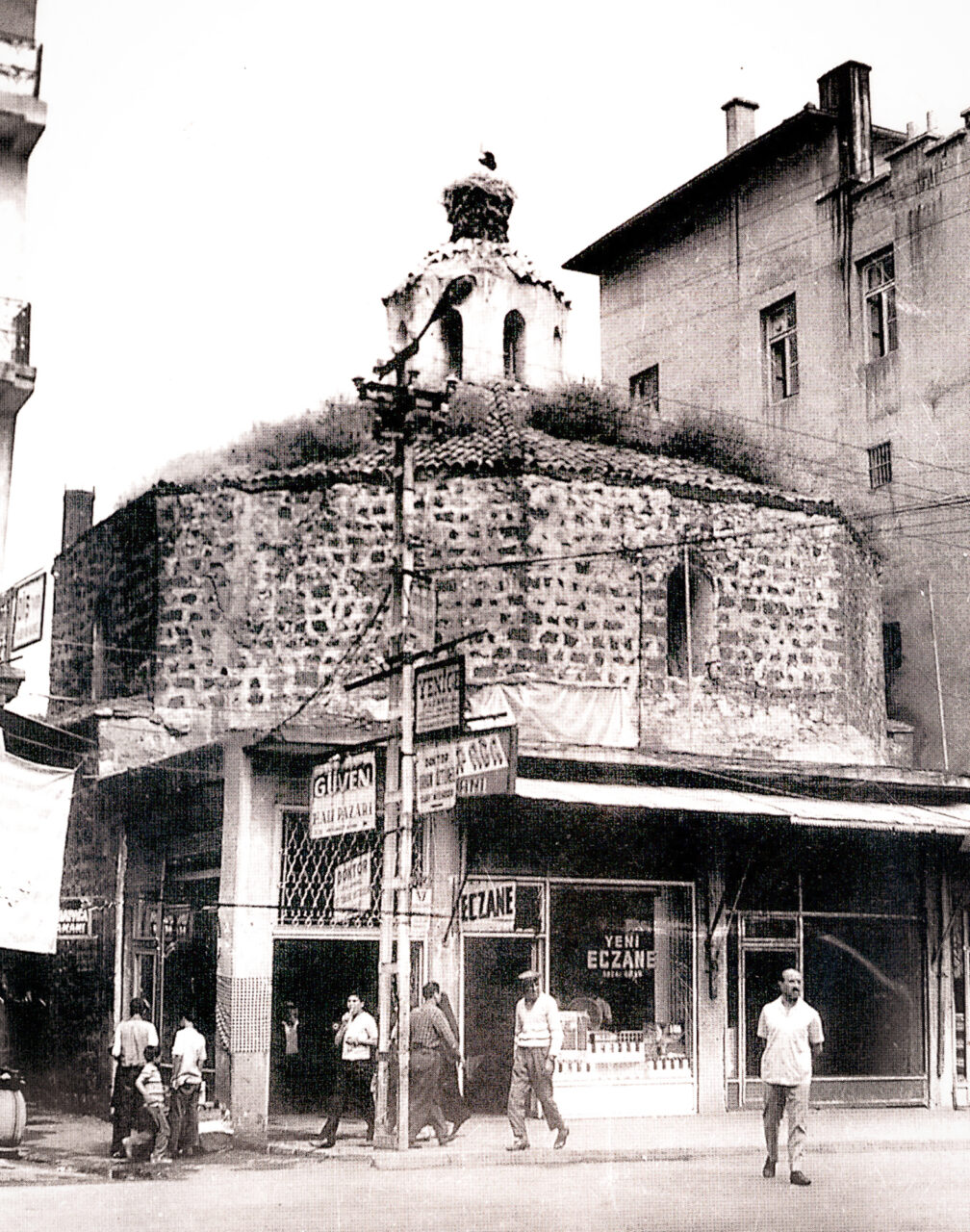Throughout human history, the act of washing oneself has always had both a physical and spiritual aspect. And thus, hamam, or baths, where this act was carried out in a collective atmosphere, always served functions beyond “washing”. They diversified the social intersections of everyday life and created their own rituals and histories.
Baths have always been important in Diyarbakır’s cultural life as well. Following the path of her personal experiences, researcher Birsen İnal has shared impressions of the city’s bath culture with us. Remziye Özakbulut, a 94-year-old resident of Diyarbakır, in an oral history interview, conveyed her memories of bath days from her childhood. Academic Emine Ekinci Dağtekin, on the other hand, focused on the important baths of Diyarbakır from a historical and architectural point of view.
With their historical texture, as places of healing and recovery, and as sites of social life, public baths were cornerstones of Diyarbekir culture. The most popular historical public baths were Melik Ahmet Hamamı, Deva (Deve) Hamamı, Paşa Hamamı, Küçük Hamam (Şensu Hamamı), Vahap Ağa Hamamı, Çardaklı Hamamı, Suakar Hamamı and Kadı (Kadê) Hamamı.
For both women or men, baths have a place in our memories. The women’s bath, with its unique qualities, is like a laboratory. Bodies are purified of toxins with steam, skin is renewed by rubbing and pain is relieved with massage, but not only that, baths are also places where prospective brides are sought out and gossip is made, where people show off and those who are confident about their looks parade their beauty.
From the day before, first every nook and cranny of the house would be cleaned, and the bath bundles were prepared from the night before. We would get up early on bath day and first do our “ayax yolî” [toilet] cleaning. Then we would set out our table in the shady part of the “hewş” [courtyard], call our neighbours, and have breakfast with great pleasure with herb cheese, braided cheese and cheese in brine, Derik’s green olives, fried vegetables, pickled peppers, “zehter” [a blend of mountain thyme] and whatever else we had at home. After breakfast we would ask baker Uncle Tümes for a “carut ataş” [a shovel of fire] and leave the double-handled washing cauldron on the furnace. As our mothers washed the mountain of washing piled up before them in the huge copper teşt [washbowls] it was almost as if they were doing their “daily sports exercise” with great effort.
Birsen İnal, Researcher, Writer
After the washing was done, the cauldrons, the teşt [wasbowls] and the baskets would be rinsed and left in a sunny place to dry. Now it was time for food. Since everyone would be tired upon return from the bath in the evening, the embers in the furnace would be placed on the brazier with a fire shovel.
The bohça [bundle], kildan,¹ nalın² and hamam tahtası [bath board] would be placed in the bath bag. We would generally go with our Assyrian neighbours to the Kadê Hamamı on Saturdays. Our bohçacı [bundle porter] Gulê Bacî, never missed our day. She would knock on our door at around ten o’clock, and you could read the rebellion in her eyes as she threw our bags over her shoulder. Gulê Bacî was an Assyrian from Syria, swept here by a hurricane of pain.
We would gather as a group of neighbours and go to the bath together. The bath fee was one mecidiye per person. Gulê Bacî would open and prepare our bundle beforehand. She would always carefully spread out the “çulî” (ground cloth) at the bottom, the satin covering above it, and on the very top, the white çitme with embroidery.
Our mothers would wrap a white peştamal first, and on top of it a kirşan (pure silk of Damascus) peştamal. We would first enter the cool room, wearing our bath clogs with silver embroidered bands, and from there, to the head of our curun (washbasin). No one could go and sit at someone else’s curun. There would be hell to pay when someone did that. Unfortunately, those who could not afford to pay bakshish, had no reserved place, and they would have to sit wherever they could find, and they would only manage to wash themselves while being exiled from one curun to another. Those who could afford the twenty-five kurush would enjoy the place they had made their own.
Birsen İnal
¹ Kildan: A copper vessel with a lid in which bath materials such as a comb, formerly clay and then soap, a washcloth and a bath glove were placed.
² Nalın: Wooden bath clogs with high-soles.
The Assyrian Elmas Bacî and her daughter worked as natura¹ of Kadı Hamamı. Elmas Bacî would wash our heads and do kese [rubbing], and her daughter would help her. In contrast with the melancholy on her face, Elmas Bacî would almost caress the head she was washing. Her daughter, on the other hand, would resentfully hit the floor with the “textik” (wooden) clog on her feet, and cast sulky and rebellious looks all around. That’s why everyone called her “kaçık” [crackpot]. Yet her crackpotness was due to the fact that she lived in an unjust world. She was young, she was beautiful, she had hopes; she, too, would want someone to wash her, rub her, and pour water off her head.
When the time for the feast came, the tables were set, whatever was brought would be shared, and those who had good voices would sing. The bath bowl would become a darbuka, and people would step up to the göbektaşı, the navel stone in the centre of the bath. People would begin to clap, and chants of “tîlîlî” would tear apart the dome. The fun the dancers had on the navel stone would enrapture onlookers. This was also the exact time to fancy a bride. People would wink and make eyes at each other showing the girls they fancied to women who had sons at the age of marriage. Addresses would change hands on the sly, and the girls would glide like swans in front of the mothers of such sons, as if they were not aware of all the goings-on.
Once the washing session was over and the time to leave came, the curun would be washed again, rinsed and dried. When the final bowls of water were poured, Elmas Bacî and her daughter would wait with “qımıt” [towels] in their hands, extending them to the women, hoping for bakshish. The woman in front, followed by Elmas Bacî or her daughter, would carry the water that would be poured on feet with the bath bowl. Baths could then also become places where such unfair scenes took place.
Birsen İnal
¹ Natura: The person who carried the belongings of the bath client to and from the bath. Sometimes they would also fulfil the task of yuğuculuk (cleaning, rubbing).
![Kildan, in which bath materials were placed, the carpets laid out on the floor and the peştamal [loincloths] were carried from home to the bath and back by natura, who did this work as a profession. (The archive of Kenan Özhal, Photographs: Eren Karakuzu)](https://diyarbakirhafizasi.org/wp-content/uploads/2020/11/3ab_Hamam-1280x584.jpg)
“The bride’s bath” had different rituals. When the time came, the mother-in-law would begin preparations from the day before. Close relatives would be invited. The bride would bring her bath pouch as dowry, and in it, bundles, silver clogs, silver or copper bath bowls, kildan, çitme and kirşan peştamal would be placed. The bride’s bath would generally be held on Thursdays. Invitees would enter from the bath gates collectively, letting out chants.
The bride would be dressed in her wedding gown, and made to sit on a chair in the changing section for all the invitees to observe. At this moment, those in attendance would make silent comments. Then, under curious gazes, the bride would timidly undress. She would wrap her kirşan peştamal on top of her white peştamal, the bridesman’s wife would take her by one arm and her sister-in-law would take her by the other arm, and they would enter with candles in their hands. With chants echoing off the bath’s dome, everyone would put aside the bowl, soap, bath mitt or washcloth, and those who had soaped themselves would watch the beautiful bride with stinging eyes.
During the feast, bath bowls would serve as darbukas, and as women danced around the navel stone singing folk songs, women with beautiful voices would sing songs, and some women would dance on the navel stone itself. If the bride was from a wealthy family, then the renowned musicians of Diyarbakır would be specially invited.
Following the rubbing, in the soğukluk [cool room] various seasonal fruits would be eaten off silver trays, and silver spoons would be dipped with great pleasure into ginger sweets in jars, and walnut, hazelnut and almond paste. After the final washing session, as she exited, the bride would first kiss the hand of her mother-in-law, and then the hands of all the other elderly women present.
Birsen İnal
“We used to go to Melik Ahmet Hamamı, and then we went to Kadı Hamamı. There were also Paşa Hamamı and Deva Hamamı. There were many baths, but I have forgotten their names.
We would put our towels and our carpet in our washbasins [badiye]. Then our natura would place our stuff on her back and take it to the bath. Everyone had their own day. Our day was Friday. We had our own curun. On that day, no one else would come to our curun.
We wore takunya [bath clogs]. And kirşan peştamal, loincloths made of silk… The wealthy would wear the silver takunya, and they would enter the bath, swaying. And the brides. The bride would wear her gown. A chair would be placed for the bride. Then they would make kebabs, and çiğ köfte. Kadayıf [shredded wheat in syrup] would be brought for the bride from outside. We would set up the table and eat together.
In our kildan we had our comb, soap, washcloth and bath mitt. The kildan was made of copper. We had ivory combs. Our towels were placed separately. They were made in Antep, and their ends were cross-stitch embroidered. We took wooden stools with us to sit on. You paid the natura and she would take all your belongings from your home to the bath. We took the cold water inside with a cauldron, we had small badiye [washbasins]. Everyone brought their own badiye to the bath. The natura also carried them. Then the use of badiye disappeared over time.
Some would invite women musicians. There was a musician called Çalgıcı Zeko. One would play darbuka, another def [tambourine], and another zilli maşa. They passed away. They were Armenian. There was also Çalgıcı Ayşe, she played the cümbüş.
We used to take ‘hayva’ (quince) to the bath and throw them in the water; so they would soften and we could eat them. We would fill jars with hazelnuts and sweets. We would cook çükündür (beetroot) at home and take it to the bath.
Boys couldn’t come. Boys, especially after they have reached the age of 10 would not be brought. It would be mothers and daughters. Or brides and mothers-in-law. In the bath, there would be the ‘yünçi’. Yünçi, in other words, the person who washes. She would wash the mothers, daughters and their children who could not wash on their own. A payment would be made to her. We were small, our mother would wash us. Then we grew up and we began to wash ourselves.”
Remziye Özakbulut, oral history interview
Throughout history, people have always washed themselves for a variety of reasons, from physical cleanliness to spiritual purification as a religious necessity. At first, the need was met in open air, at rivers and streams considered holy, and later closed spaces were built, like hamam, or the bath. Baths are social structures where, other than washing, different aims such as rest, conversation, new friendships and entertainment for brides before and after weddings can be met. Baths have become a kind of forum, going beyond the simple boundaries of their original function. They expanded the boundaries of everyday life that took place within the triangle of mosque-tekke [religious lodge]-market, and enabled the public to gather in a place other than the coffee houses.
In Anatolia, baths are classified as private or general according to their use, and general baths are classified as tek [single] and çifte [double] baths depending on whether they are allocated to women and/or men. In both tek and çifte baths, the plan features, respectively, the soğukluk [cool room], ılıklık [warm room], sıcaklık [hot room], su deposu [water tank] and külhan [furnace] sections. We also observe other spaces, such as towel drying rooms, a coffee room, kadı locası [lodge of the judge], wood storage and courtyard. The sıcaklık section, formed of iwans and halvet [private rooms] is both the warmest and spectacular part of the bath. The külhan is the heating centre of the bath and is accessed from a separate entry from the street. The copper boiler in the water tank section is placed above the furnace, and the water is heated by burning firewood. The space right beneath the tiling placed above brick and stone columns in the sıcaklık and sometimes the ılıklık section is known as cehennemlik [hypocaust, literally the hell room]. The heat and smoke from the fire on the furnace goes to cehennemlik.
Associate Professor Emine Ekinci Dağtekin, Architect
Diyarbakır’s commercial atmosphere was quite lively in the 16th century, and baths would be built, together with han, or commercial buildings, close to the entry points to the city, to prevent foreigners from bringing in contagious diseases. The high number of baths in Suriçi also meant that there would be a problem of fuel. Evliya Çelebi visited the city in the 16th century and he states that the thirteen existing baths were heated with the waste of the city. The number of baths was around twenty in the 19th century, of which only six are extant today. In the city centre, Deva Hamamı, Paşa Hamamı, Kadı Hamamı, Çardaklı Hamamı and Vahap Ağa Hamamı are the baths that are partially or completely standing. Only the soyunmalık [changing room] section of Melek Ahmet Paşa Hamamı remains, whereas it is only the wall of the soyunmalık that remains of Cıngıllı Hamam. Vahap Ağa Hamamı is used as a cafeteria/restaurant, while Melik Ahmet Paşa Hamamı is used as a warehouse, the others remain inactive. Consequently, not a single one of these historical baths serves its original function.
Traditional baths in Diyarbakır display schematically similar features with Anatolian bath architecture, however they differ in terms of the position of the taşlık section before the soğukluk in the Çardaklı and Deva baths, and the addition of courtyard spaces to the Paşa and Kadı baths.
The lantern for lighting on the upper coat displays common features with many other baths constructed across Anatolia, however the exaggerated sizes of lighting elements in the ılıklık sections, and the ışıklık [light wells] that descend as low as the dome perimeter and lined in different geometric orders are unique details of the city’s baths.
Emine Ekinci Dağtekin
ÇARDAKLI HAMAMI
Çardaklı Hamamı, in the Dabanoğlu Neighbourhood, was built from 1520 to 1540, as part of the Hüsrev Paşa Foundation and was expropriated in 1999. In his travelogue, Evliya Çelebi states, “Its architect is unknown, however, it is a clean and well-lit bath”.
The bath is entered via a taşlık section from the street to the north. The bath is composed of a square-plan soğukluk, a rectangular-plan ılıklık with two sections, toilets, a a star-plan sıcaklık with six iwans and six halvet [private sections], a rectangular water tank and külhan [furnace]. There are two, two-story iwans in the east and west directions, a staircase leading up to the upper floor iwans and in the corners, four niches within circular vaults. In the exact centre of the sofa [anteroom] there is an ornamental pool.
In the middle of the sıcaklık room there is the square-planned göbektaşı, the navel stone. The sıcaklık section is covered with a lowered-dome. The circular and square ışıklık [light wells] allow natural light to enter from the dome. The soğukluk wall collapsed and there was also damage to the dome lantern and light wells during the period of clashes in Suriçi in 2015-16.
Emine Ekinci Dağtekin
DEVA HAMAMI
Deva Hamamı is located between Mardinkapı and Balıkçılarbaşı, to the west of the main road, and it is known to have been built in 1540, and that it was known as Hamam-ı Kebir (the Great Bath) then. The bath belongs to Hüsrev Paşa Vakfı [Foundation] and the shops facing Gazi Street, on the eastern façade of the soğukluk section were built to provide income for the foundation.
The bath is entered from a drop-arched door. The square-planned soğukluk section has a pool in the middle, and sitting platforms along the wall. The wooden mezzanine is specifically designed for changing and resting. In the centre of the dome there is a lantern with an octagonal frame and on each face, a drop-arched window. The sıcaklık section is made up of six halvet [private sections] and four iwans, with a circular-planned göbektaşı [navel stone] in the centre. The washing section with kurna [washbasins], opposite the entrance of the sıcaklık, 0,3-0,4 metres deep under a lancet arch is unique among Diyarbakır baths. The domed sıcaklık section is illuminated with the fil gözü [literally elephant’s-eye] light-wells across the dome.
Emine Ekinci Dağtekin
PAŞA HAMAMI
Formerly called Behram Paşa Hamamı, Paşa Hamamı belongs to Behram Paşa Vakfı [Foundation] and was built, along with the mosque, mesjid and madrasa from 1564 to 1567. Evliya Çelebi states that this bath was built “with great care by master builders invited from Gaza and Jerusalem, its marbles are splendid and it competes with Defterdar Hamamı in Damascus and Osman Bey Hamamı in Egypt”.
The bath is based on a rectangular plan along the north-south axis. On the busy street to the South there is the men’s entrance, and the women’s entrance is in the West. The courtyard serves as taşlık, and only the Paşa and Kadı baths in Diyarbakır have a similar design. The windows to both sides of the entry to the soğukluk are also unique. The column heads and bodies in the window frames are adorned with floral and geometric ornamentation. The square-plan, concrete pool in the soğukluk section has changed over time. The dome is placed on an octagonal frame, and at its centre is the octagonal lantern.
The sıcaklık section is based on a cross-plan with four iwans and four halvet [private sections]. In the middle of the sıcaklık sofa [room] there is an octagonal göbektaşı [navel stone]. There are niches on the kurna [washbasins] to place soap and washcloths.
Emine Ekinci Dağtekin
MELİK AHMET PAŞA HAMAMI
From 1567 to 1591, Melik Ahmet Paşa ordered the construction of a bath, a mansion and a mosque in Diyarbakır. Melik Ahmet Paşa Hamamı and the shops built along with it became the endowments of the mosque. Only the soyunmalık [changing room, apodyterium] section of the bath stands today. The information we have indicates that the bath had two doors, one on the Melik Ahmet Street side, and the other on the street facing east. Beneath the abutments to the two sides of the lancet arch are four posts (small columns). The soğukluk section has a square-like plan and it has suffered spatial disintegration because of the flooring and wall added at a later date.
Emine Ekinci Dağtekin
KADI HAMAMI
Previously known as İpariyye or Eşbek Hamamı, it is not known when Kadı Hamamı took this name. Kadı Camii, which also belongs to the foundation of the bath was constructed in 1543-44, and it is believed that the bath structure was built around the same time.
The courtyard is entered through a drop arched entrance to the south of the bath, and through the courtyard one reaches the soğukluk [cool room]. The platform with niches to place shoes, extending along the soğukluk wall, is an architectural element that only Kadı Hamamı has among Diyarbakır baths. The soğukluk dome is placed on an octagonal frame connected with pendentives.¹ There are four arched windows along the dome frame. Kadı Hamamı is also the only bath in the city that features a stone lantern.
To the north of the soğukluk is the ılıklık [warm section] which has two parts. In this bath, too, the sıcaklık [hot room] has a cross plan. The water tank to the north of the bath has been built parallel to the soğukluk and sıcaklık spaces.
During the restoration work carried out in 2009-10, the dome of Kadı Hamamı was renewed, wall surfaces were scraped, joints were filled and the floor was covered with flat basalt stone. The original platforms and washbasins were removed.
Emine Ekinci Dağtekin
¹ Pendentive: An architectural element used to support the dome.
VAHAP AĞA HAMAMI
The architect and exact construction date of Vahap Ağa Hamamı on Gazi Street is not known, however, sources date it to around the 16th to 17th centuries. The bath is placed on a square-like plan along the East-West axis. The bath is entered through a door that was added at a later date, and which today is located on Telgrafhane Street. The original entrance is to the east of this door.
For many years, the soğukluk [cool room] section of the bath was separated from the main building and rented out as a profitable commercial space since it is located on the commercial axis of the city. With restoration work carried out in 2013, the added partition wall and flooring in the soğukluk section was removed to transform the structure back to its original state.
When the soğukluk section was transformed into a commercial space, the ılıklık [warm room] began to serve as the soğukluk. The “L” shaped ılıklık section is entered from the drop arched street entrance in the south side. Both ılıklık sections, parallel to the soğukluk, are each covered with three domes. The water tank and the külhan [furnace] section are located after the sıcaklık [hot section].
Emine Ekinci Dağtekin
Translation: Nazım Dikbaş
BIBLIOGRAPHY
Birsen İnal
• İnal, B. (2013) Özümsen Diyarbekir, Lîs Yayınevi, Diyarbakır.
Emine Ekinci Dağtekin
• “Hamam [The Bath]”, İslam Ansiklopedisi [Encyclopaedia of Islam], Volume 5, Türkiye Diyanet Vakfı Yayınları, Istanbul: 402-425, 1997.
• Arseven, C. E. (1947) “Hamam [The Bath]”, Sanat Ansiklopedisi [Encyclopaedia of Art], Volume 2, Istanbul: 678-689.
• Aru, K. A. (1949) Türk Hamamlar Etüdü [A Study of Turkish Baths], PhD Thesis, İstanbul Teknik Üniversitesi Fen Bilimleri Enstitüsü, Istanbul: 4-30.
• Beysanoğlu, Ş. (1990) Anıtları ve Kitabeleri ile Diyarbakır Tarihi [History of Diyarbakır with its Monuments and Inscriptions], Volume 1-2, Ankara: 186-550.
• Beysanoğlu, Ş. (1998) Anıtları ve Kitabeleri ile Diyarbakır Tarihi [History of Diyarbakır with its Monuments and Inscriptions], Volume 1, Ankara: 575-642.
• Dağtekin, E. (2007) Güneydoğu Anadolu Bölgesi Geleneksel Hamam Tipolojisi Ve Buna Bağlı Koruma Ölçütlerinin Oluşturulması [The Typology of Traditional Baths in the South-eastern Anatolia Region and the Establishment of Relevant Protection Measures], PhD Thesis, Gazi Üniversitesi Fen Bilimleri Enstitüsü, Ankara.
• Dağtekin, E. ve Hillez, S. (2011) “Tarihi Yapılarda Yeniden İşlev Önerisi, Diyarbakır Vahap Ağa Hamamı Örneği [Re-functioning Proposal for Historical Buildings, the Diyarbakır Vahap Ağa Hamamı Case”, Diyarbakır Mimarlık ve Kent Sempozyumu [Diyarbakır City and Architecture Symposium], Diyarbakır: 119.
• Dağtekin, E. (2013) “Diyarbakır Hamamları [Diyarbakır Baths]”, Diyarbakır Ansiklopedisi [Diyarbakır Encyclopaedia], Elvan Yayınları, Ankara.
• Diyarbakır Kültür ve Tabiat Varlıkları Koruma Kurulu Arşivi [Archive of the Diyarbakır Cultural and Natural Assets Protection Council], 2005.
• Evliya Çelebi (1998) Seyahatname [Travelogue], Volume 2, Yapı Kredi Yayınları, Istanbul: 447.
• Eyice, S. (1960) “İznik’te Büyük Hamam ve Osmanlı Devri Hamamları Hakkında Bir Deneme [An Essay on the Great Bath in İznik and Ottoman Period Baths]”, İstanbul Üniversitesi Edebiyat Fakültesi Tarih Dergisi, 11(15): 108.
• Kılcı, A. (2011) “Diyarbakır’ın vakıf mimari eserleri ve vakıfları üzerine bazı notlar [Notes on Diyarbakır’s foundation architectural works and foundations]”, Medeniyetler Mirası Diyarbakır Mimarisi [Diyarbakır Architecture, A Heritage of Civlizations], (ed.) İrfan Yıldız, Diyarbakır Valiliği Yayınları, Diyarbakır: 31-41.
• Önge, Y. (1988) “Anadolu Türk Hamamları Hakkında Genel Bilgiler ve Mimar Koca Sinan’ın İnşa Ettiği Hamamlar [General Overview of Anatolian Turkish Baths and Baths Constructed by Mimar Koca Sinan”, Mimar Başı Koca Sinan: Yaşadığı Çağ ve Eserleri [Head Architect Koca Sinan: His Era and Works], Volume 1, Vakıflar Genel Müdürlüğü Yayınları, Istanbul: 403-428.
• Sözen, M. (1971) Diyarbakır’da Türk Mimarisi [Turkish Architecture in Diyarbakır], Istanbul: 21.
• Tuncer, O. C. (1996) Diyarbakır Camileri [Diyarbakır Mosques], Diyarbakır Büyükşehir Belediyesi Yayınları, Diyarbakır: 100.
• Ünver, S. (1973) “Türk Hamamı [The Turkish Bath]”, Belleten, 37(145), Istanbul: 87-94.
• Vakıflar Genel Müdürlüğü Arşivi [The Archive of the Foundations General Directorate], Diyarbakır Şerri Sicil Defteri [Diyarbakır Legal Registry Book], no: 367, l. 6-7, 1841-1842.
• Vakıflar Genel Müdürlüğü Arşivi [The Archive of the Foundations General Directorate], notebook number 532, l. 60; notebook number 530, l. 57; notebook number 159, l. 1024-1030.
• Yılmazçelik, İ. (1997) XIX. Yüzyıl’ın İlk Yarısında Diyarbakır [Diyarbakır in the first half of the 19th century], Türk Tarih Kurumu, Ankara: 84-86.



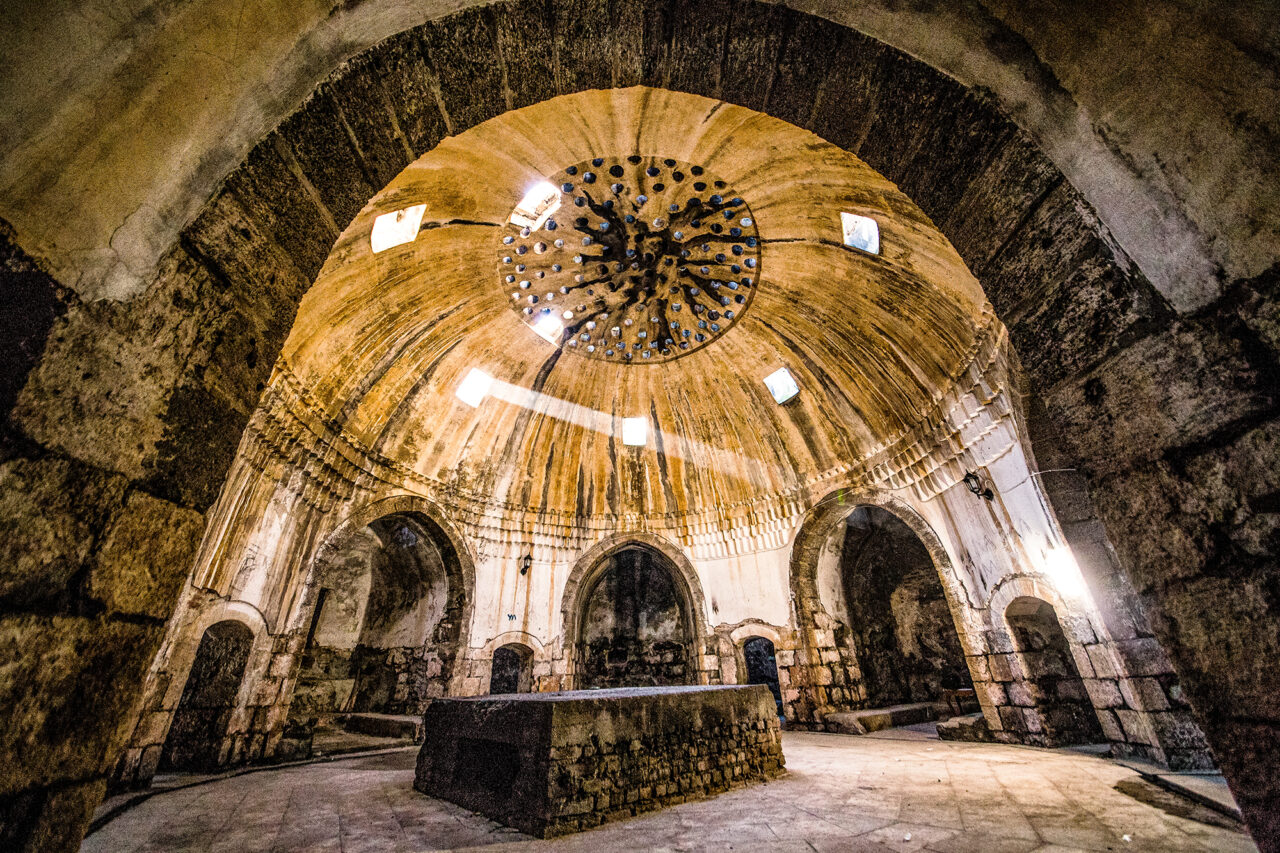

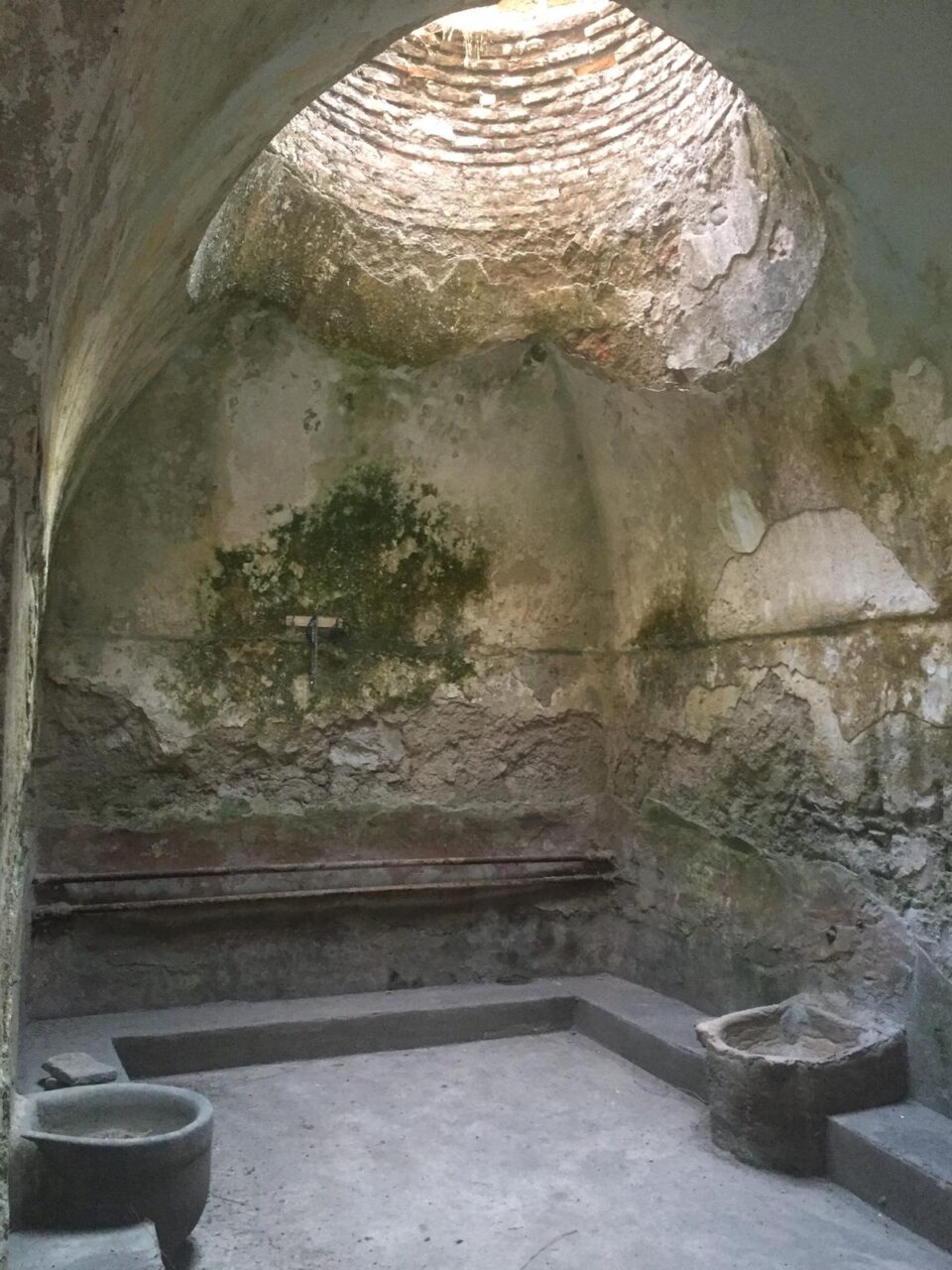
![“The bride’s bath” was a day of meticulous preparation for families. The bath sack was an important part of the dowry and would often include silk peştamal [loincloths] and silver inlaid nalın [bath clogs]. (The archive of Birsen İnal, Photograph: Meral Özdemir)](https://diyarbakirhafizasi.org/wp-content/uploads/2020/09/4_Hamam-1280x784.jpg)

![It is possible to separate baths into private and public baths. Public baths, depending whether they were allocated to women and/or men can then be described as tek [single] and çifte [double] baths. The photograph above was taken in 2010 at Vahap Ağa Hamamı.](https://diyarbakirhafizasi.org/wp-content/uploads/2020/09/6_Hamam-1280x857.jpg)
![The architectural layout of historical baths in Diyarbakır does resemble Anatolian baths in general, however, they display a number of unique aspects. For instance, the fact that the taşlık section at Deva Hamamı precedes the soğukluk [cool room] is one such feature. (SALT Araştırma, the archive of Ali Saim Ülgen)](https://diyarbakirhafizasi.org/wp-content/uploads/2020/09/7_Hamam-1280x935.jpg)

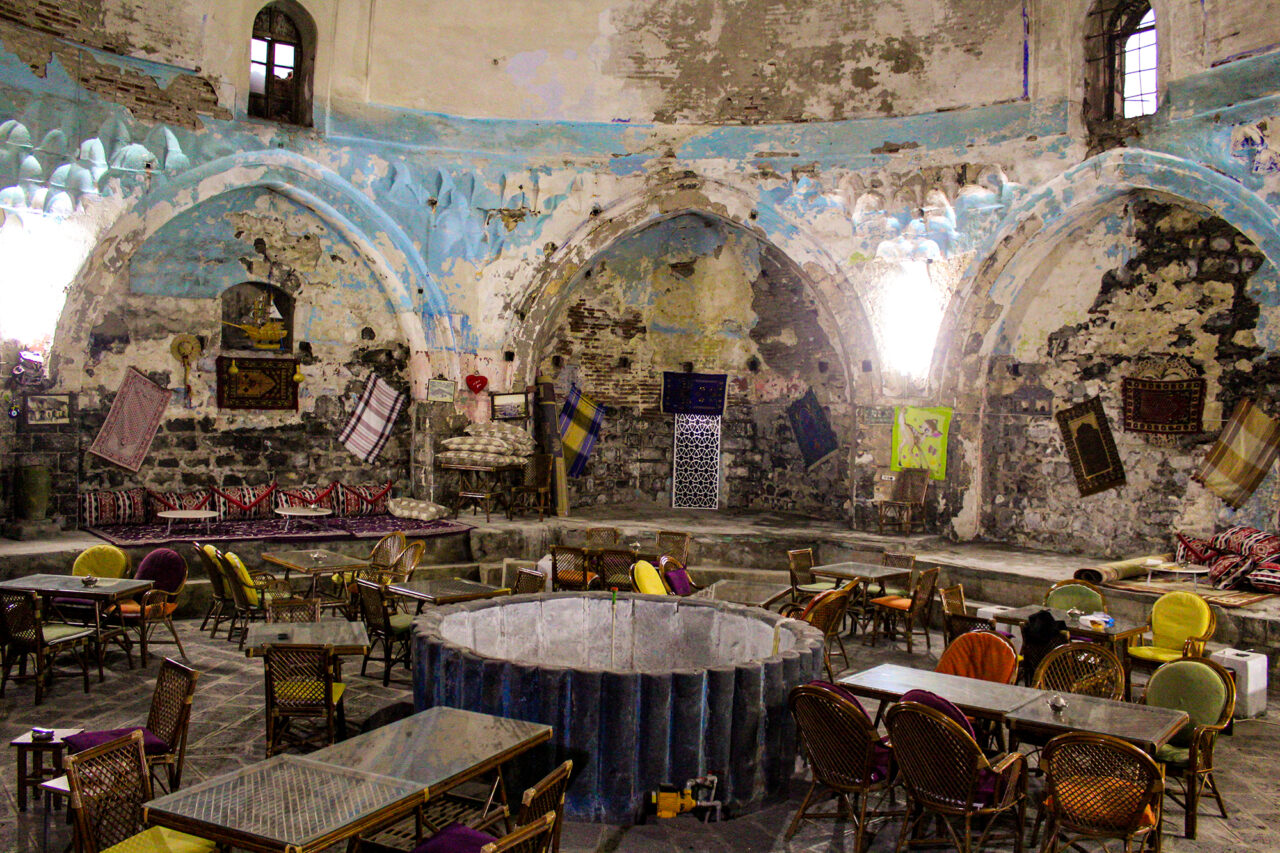

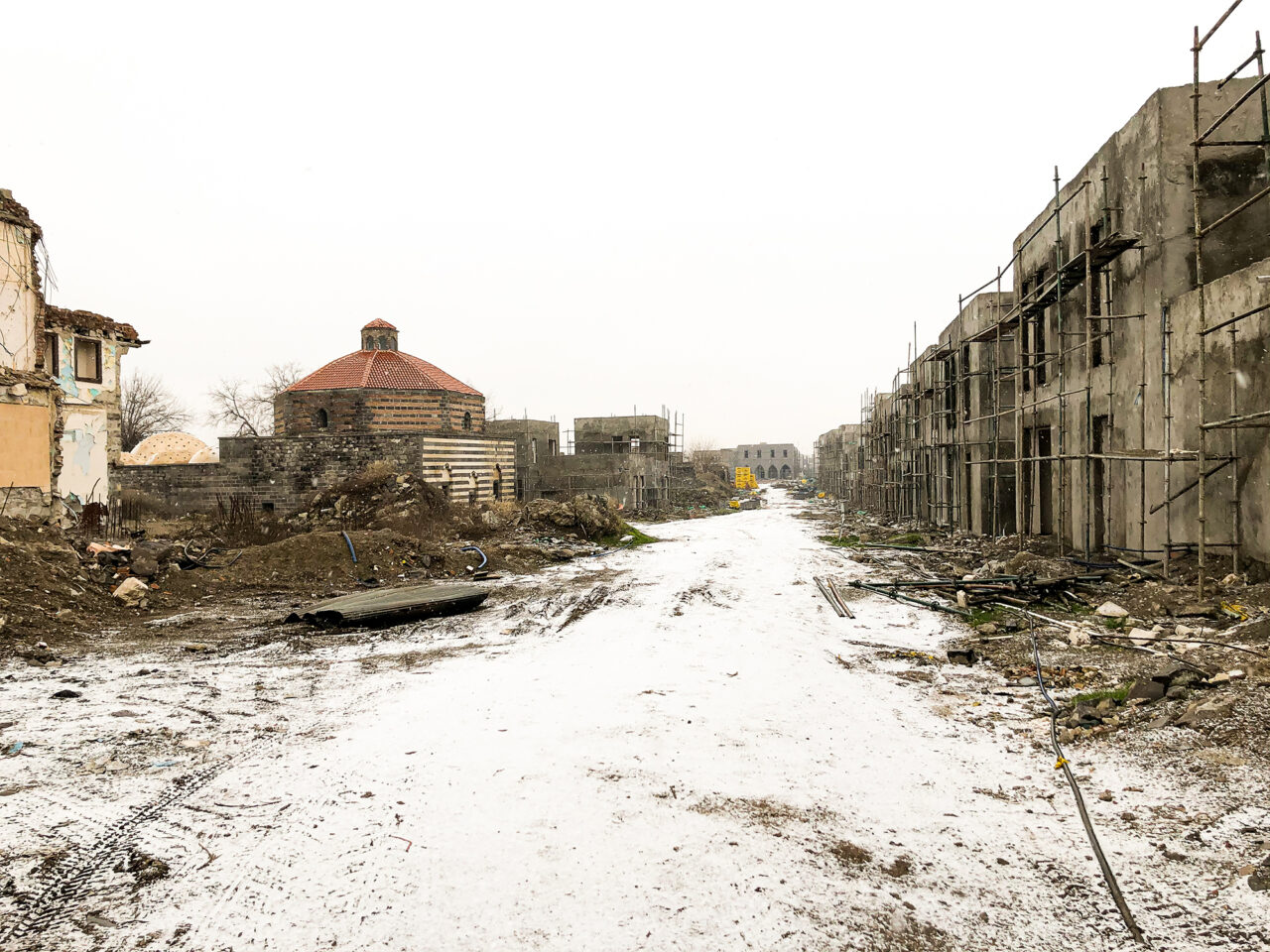
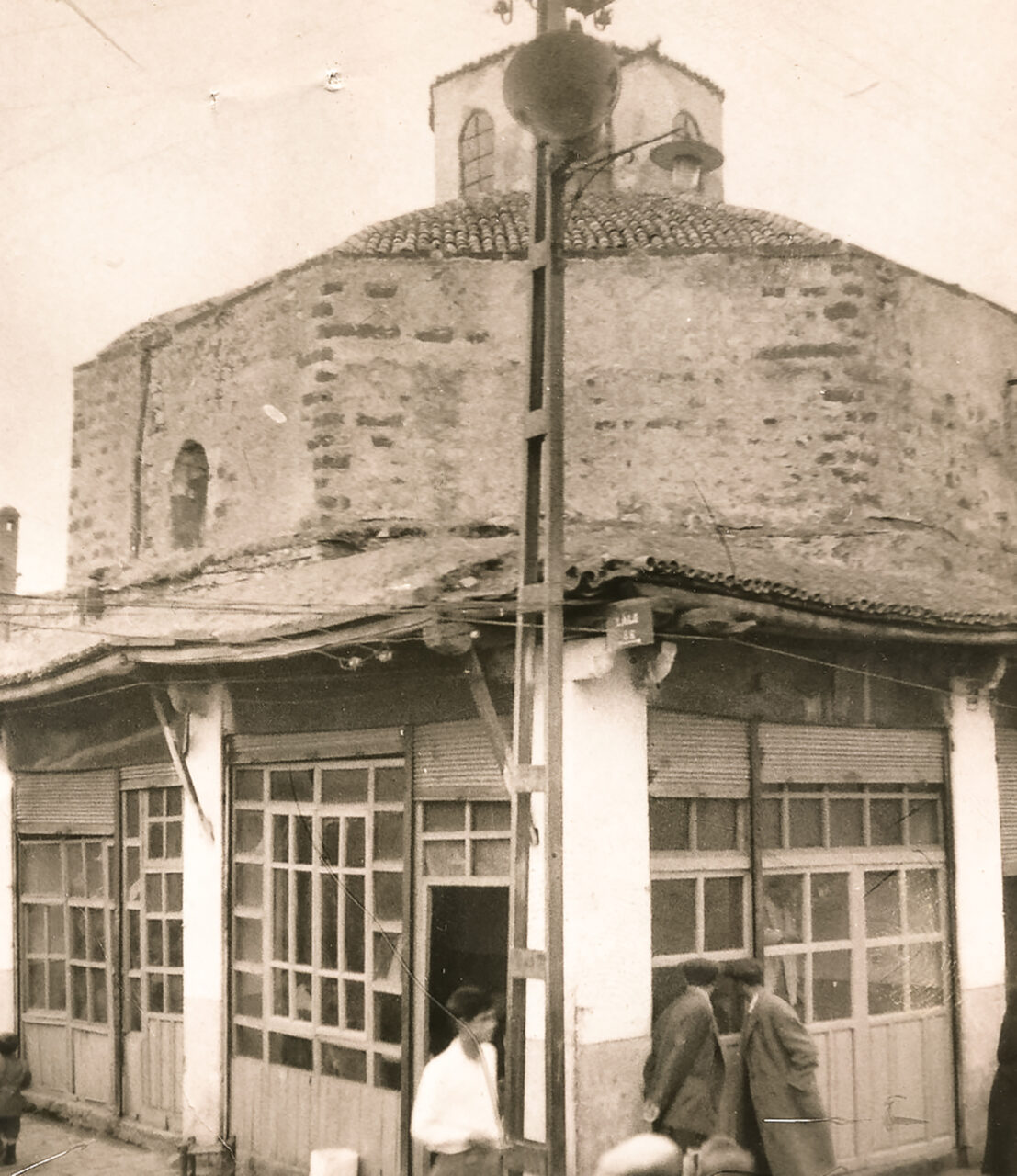
![The Kadı Hamamı is thought to have been constructed in the 16th century along with Kadı Camii [Mosque] that belongs to the same foundation. The structure underwent renovation in 2009-10. (Photograph: The archive of Emine Ekinci Dağtekin)](https://diyarbakirhafizasi.org/wp-content/uploads/2020/09/12_Hamam-1280x892.jpg)
